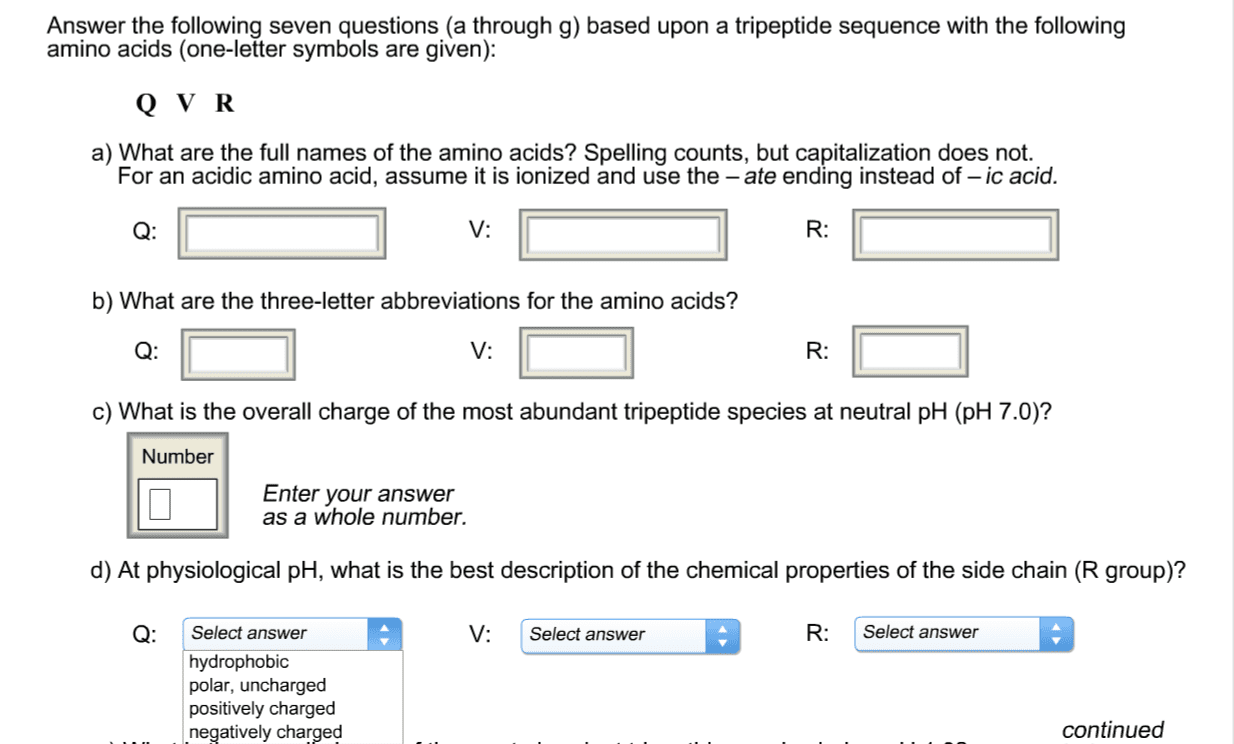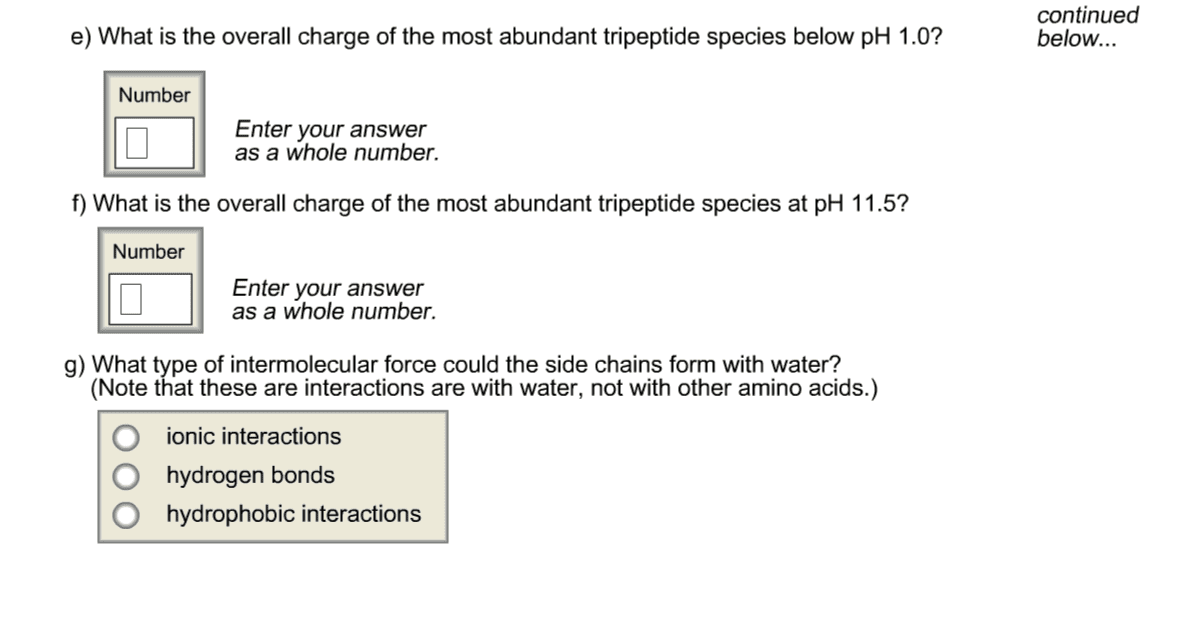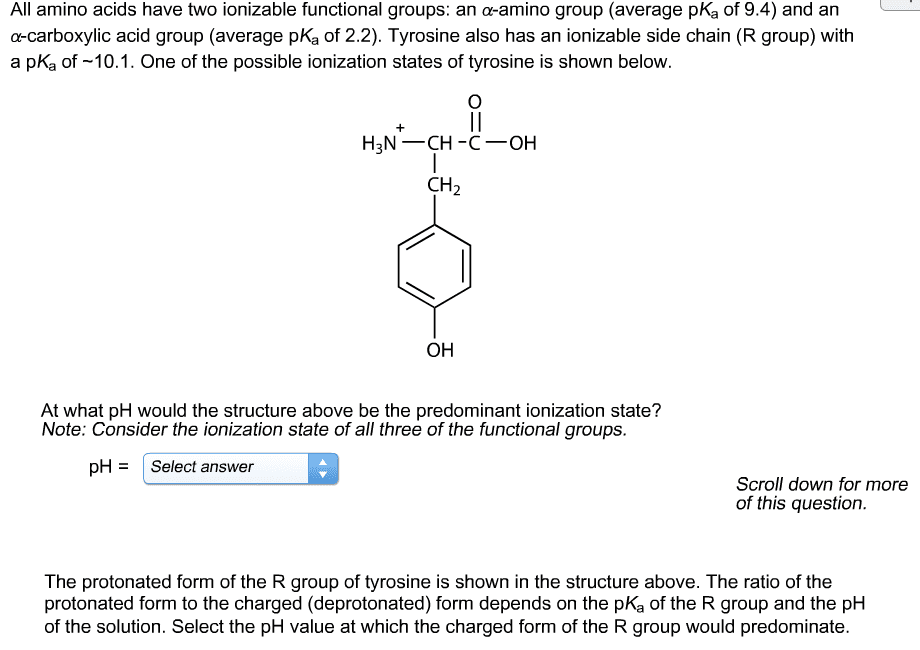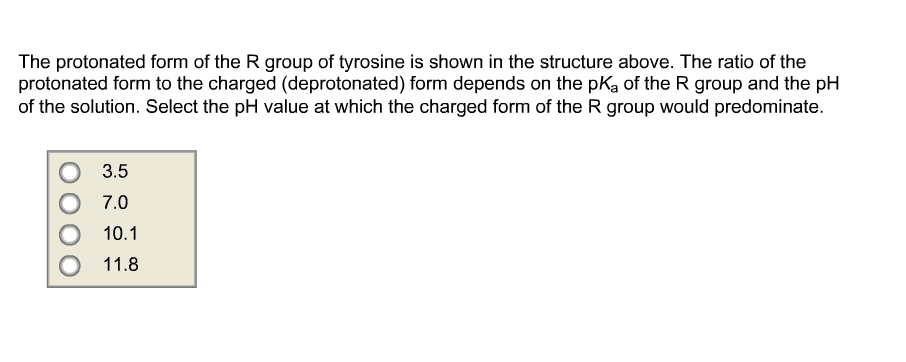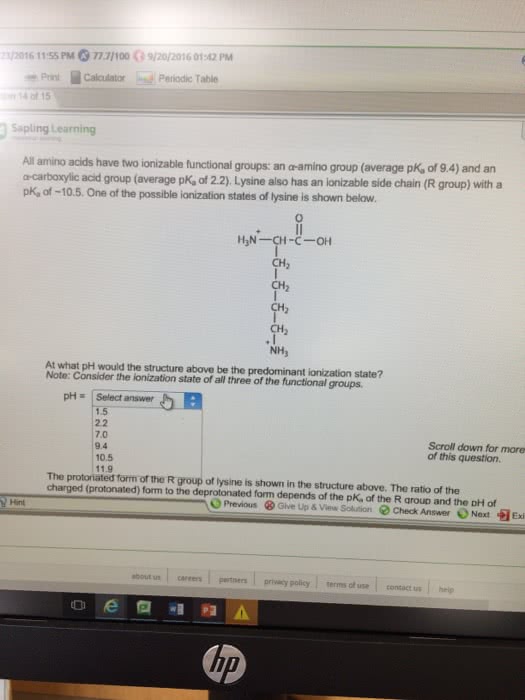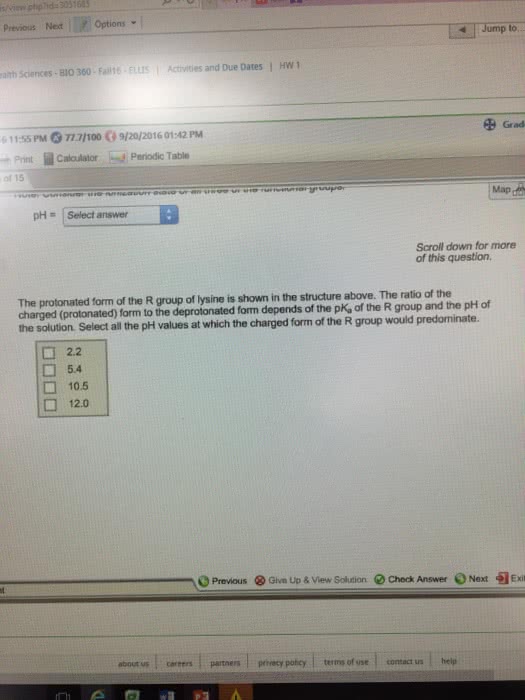CHE 211 Study Guide - Final Guide: Amine, Chief Operating Officer, Arginine

Organic Chemistry 2: Proteins
Classes of Amino Acids – Use the Cue Cards!
• First of all, how are the D- and L- configuration of amino acids assigned? First of all, the
carboxylate group is always at the top of the Fischer projection and the alkyl group (R-
group) is at the bottom of the vertical chain; second, the protonated form of the amino
group is in the horizontal position if the amino group is on the left, this denotes the L-
isomer and if the amino group is on the right, this denotes the D-isomer
• Recall that all amino acids contain a carboxyl group, amino group, alkyl group and a
hydrogen atom; all difference between amino acids depend upon their side-chain R
groups (different alkyl group)
• Form amino acid classes based on the polarity of their side chains
o Hydrophobic or nonpolar amino acids
o Polar, neutral have a high affinity for water, but are not ionic at pH 7
o Negatively charged have ionized carboxyl groups in their side chains
o Positivity charged are basic as the side chain and it reacts with water to release a
hydroxide anion
o Table 18.1 has all the names of the amino acid in the textbook
Hydrophobic Amino Acids
▪ This is the largest category of amino acids (non-polar, hydrophobic alkyl side
chains)
▪ Since these are hydrophobic, these amino acids are found buried in the interior
of proteins, where there is limited contact with water
▪ There are 9 amino acids that fall into this category
▪ The alkyl side chain in proline is different than that of the other amino acids; the
alkyl side chain of proline is actually bonded to the amino group forming a
secondary amine
Hydrophilic Amino Acids
► The side chain of the remaining amino acids are polar and attracted to water
molecules; these amino acids are said to be hydrophilic or water loving
► These hydrophilic amino acids are found on the surface of the proteins
► The polar amino acids can be divided into 3 categories: polar neutral, negatively
charged and positively charged
Polar Neutral Amino Acids
These contain a neutral side chain; this is one that is not negatively or
positively charged at pH 7
Negatively Charged Amino Acids
These amino acids contain negative charged side chains; at pH 7, these
amino acids have a net (-1) charge; Ex. Aspartic acid (Aspartate) and
find more resources at oneclass.com
find more resources at oneclass.com
Document Summary
The side chain of the remaining amino acids are polar and attracted to water molecules; these amino acids are said to be hydrophilic or water loving. These hydrophilic amino acids are found on the surface of the proteins. The polar amino acids can be divided into 3 categories: polar neutral, negatively charged and positively charged. These contain a neutral side chain; this is one that is not negatively or positively charged at ph 7. These amino acids contain negative charged side chains; at ph 7, these amino acids have a net (-1) charge; ex. Glutamic acid (glutamate); these two can be referred to as acidic amino acids because ionization of carboxylic acid will lose a proton. Proteins are linear polymers of l- -amino acids. Carboxyl group of one l-amino acid is linked to amino group of another l-amino acid (both of these react together to link together)

